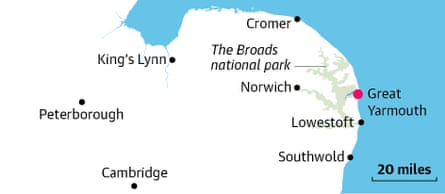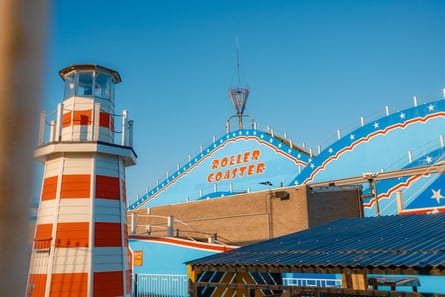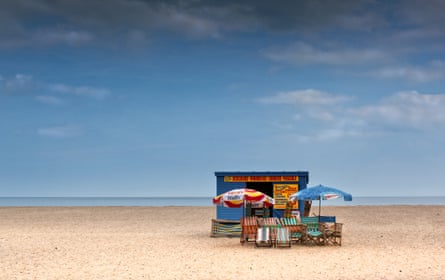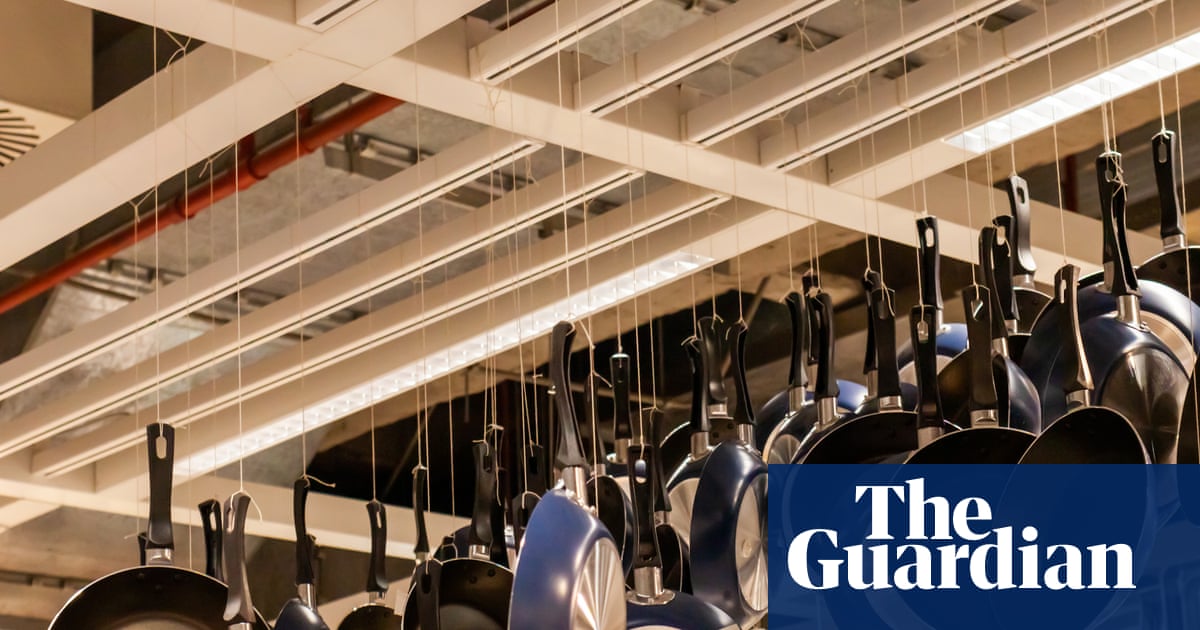‘Circus is an art form of the people. I fundamentally believe that.” I’m in Great Yarmouth for a long weekend, standing in the ring at the Hippodrome circus, bristling from that particular crackle of energy you get from an empty stage. Ringmaster Jack Jay, the fourth generation in a family of impresarios, is fresh from his annual scouting trip in search of international acts to tread the boards in Norfolk: “We have artists whose CV reads ‘Macau, Las Vegas, Great Yarmouth’,” he tells me. “That’s the standard we aim to bring in.”
The Hippodrome is a national treasure, one of only two purpose-built circuses left in the country (the other is part of Blackpool Tower, which Jack’s father also managed, briefly, in the 1980s). Founded in 1903 by equestrian George Gilbert, who ran off to join the circus aged 11, it’s an ornate building with art nouveau flourishes. But the real extravaganza is the sinking floor, restored by the Jays in 1979. Using original mechanisms, the ring is transformed into a pool with fountains and synchronised swimmers for the spectacular finale. I’ve seen the show countless times and it never loses its magic.

A holiday in Yarmouth will undoubtedly involve a Jay-run establishment at some point. They have two majestic Edwardian cinemas, one of which, the Empire, recently reopened as a live music and comedy venue. And the Windmill, originally nicknamed the Palace of Light thanks to the electric bulbs that illuminated its facade, now contains one of the best crazy golf courses I’ve been to (I am something of a connoisseur), crammed full of cinema and theatre memorabilia.
At this point I should add a disclaimer. I grew up on this stretch of coast and have always been Great Yarmouth’s biggest fan. My first jobs were in the caravan parks that dot the coastline, one of which employed every member of my family at some stage.

The town has always inspired me, from writing books about the maritime origins of our clothes to exhibitions about swimwear. But it has also given me an understanding of the precariousness of seasonal work and the generational impact on communities forced to deal with declining industries, from fishing and shipbuilding to leisure and tourism.
While there is evidence of deprivation here, as there is in many coastal towns, there is also a strong sense of resilience. It’s a town with solid foundations, built on its twin pillars of fishing and fun.
Celebrating this heritage is the Ice House, which was recently transformed into the National Centre for Outdoor Arts and Circus by the Out There Arts charity, which runs the town’s annual circus festival. Built in the 19th century to store ice to transport fish, this unique thatched structure overlooking the River Yare has been converted into a training space and performance hub complete with pop-up cafe and bar.
On our sunset walk along the promenade, my partner and I stroll past the Winter Gardens, a magnificent seafront glasshouse with enough facets to rival a diamond. Closed since 2008 and clad in hoardings, this marvel of Victorian engineering is due to reopen in 2027 and will house a cafe, exhibition and events space, and horticultural displays to mimic the floral interiors of the original.

For dinner, we head to Courtyard Italian Restaurante in the historic Rows, a tangle of narrow passageways that once formed the medieval heart of the town. The candlelit space is suitably intimate, with reservations lasting the whole evening so we can linger over our meal. The award-winning chef delivers generous portions of wild mushroom linguine. Sated and sleepy, we head to our hotel, the family-run Andover House. A restored Victorian building on a leafy side street, it is remarkably peaceful considering it’s just off the bustling stretch of promenade known as the Golden Mile.
The next day, we rise early for a visit to Merrivale Model Village, a fixture since the 1960s. I visit Merrivale every time I’m in town because, from the castle to the rocket ship, I find it utterly entrancing. Like a regular town, if slightly unhinged, and tiny. And it comes complete with an excellent penny arcade, a fantastic tearoom and nine-hole crazy golf.
The fact that attractions such as this have not only survived but thrived is largely thanks to the flair and innovation of the travelling show folk who settled in coastal resorts such as Great Yarmouth in the mid-20th century. Joyland, a seafront institution since 1949, was established by Horace Cole, who married into a travelling show family. Inspired by this lineage, he created the Super Snails and Tyrolean Tub Twist, rides that are still going strong, run by the fourth generation of Coles. Crammed with colourful attractions, from Neptune’s Kingdom (1970s) to the Spook Express (1990s), it plays out like a hallucinogenic history of the fairground.
When so much of our leisure industry is now corporatised, it’s refreshing to be in a town that is still dominated by family businesses. We head to the south end of the Golden Mile to visit the Pleasure Beach, run by the same family since the 1950s, who also trace their roots back to travelling fairs. Rides range from traditional (dodgems and the Scenic Railway wooden rollercoaster, which opened in Yarmouth in 1932 and is one of only two left in the country, the other being in Margate’s Dreamland) to the white-knuckle terror of the Sky Drop, which catapults us 22 metres above the seafront before plummeting back down to the ground.

After a turn on the Edwardian carousel (much more my pace), we stop for lunch at Sara’s Tearooms by the fortune-telling hut. Family-run since 1999, it prides itself on homemade fare, and Sara still bakes the cakes that you can eat on the beach terrace looking out to sea. We marvel at a gigantic sailing ship while I devour a perfect fish finger sandwich.
Before fish fingers there were, of course, herrings. From the 11th century, the town’s fortunes were made by the “silver darlings” migrating down the coast, and the bloater – an ungutted, lightly smoked herring – became a Yarmouth speciality in the 1830s. A century later, sending a box of them as a holiday gift was as common as sending a postcard, with up to 5,000 crisscrossing the country every day.
The Time and Tide Museum, housed in a Victorian curing works, gives visitors a visceral feel for the process (the oak-smouldered aroma still lingers in the smokehouse stacks) and a sense of the scale of an industry that once exported pickled fish to Germany and Russia and smoked fish to the Mediterranean. It also chronicles the area’s story, from the last ice age to the town’s heyday as a booming seaside resort.

Great Yarmouth’s herring traditions are also kept alive in the White Swan, where we head for dinner. A seafood restaurant with a fishmonger’s attached, it overlooks the river next to one of the medieval town wall towers. It was set up by local fisher Paul Williams, who has his own smokehouse and prepares bloaters, kippers and red herring in the original Yarmouth way. Shiplap-panelled walls strewn with netting and photographs of fishing fleets give it the convivial air of a beach hut. Highlights are oysters Rockefeller followed by hake with sea-kissed samphire and cockle veloute. We vow to return in the autumn for bloater season.
Sunday morning starts with a wander through the Venetian Waterways, at the calmer north end of the seafront. Developed in the 1920s as a work scheme for unemployed men, it was designed to mimic the canals and bridges of Venice, albeit on a much smaller scale. The Waterways were recently restored as part of a seven-acre park with ornamental gardens, and include a boating lake which is home to swans, occasional herons and pedalos for hire.
We round off our weekend with lunch at the Pier Hotel in nearby Gorleston, enjoying Cromer crab and sweet cured herrings with a sea view. The coastline here is glorious: miles of wide, sandy beaches, tufted with marram grass and rippled with dunes. Looking out to people paddling in the waves, I recall ringmaster Jack’s words: “It’s like a pilgrimage. Even if you only go once, you should go on holiday to Great Yarmouth.”
The trip was provided by visitgreat yarmouth.co.uk. Double rooms at Andover House Hotel from £99 B&B

 2 months ago
57
2 months ago
57

















































